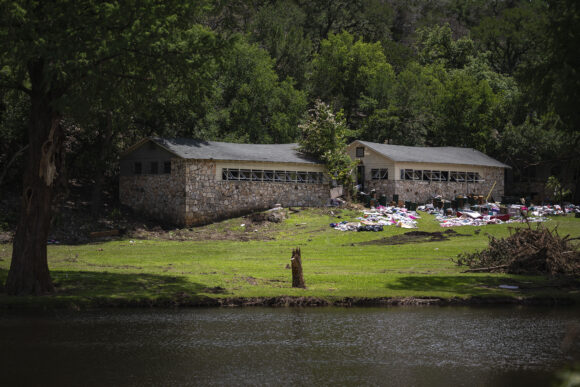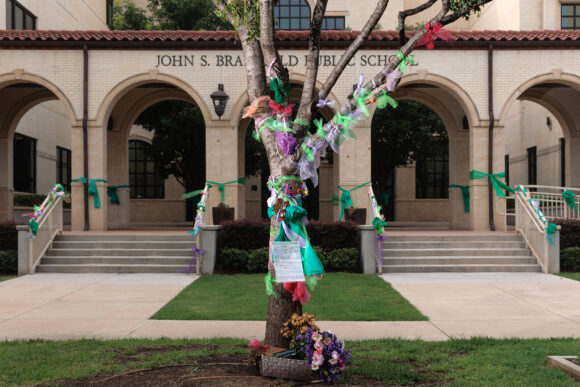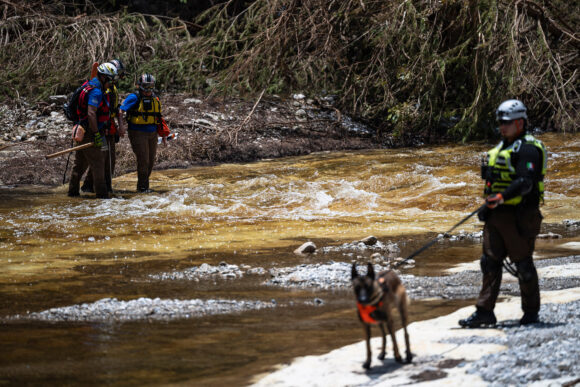Camp Mystic was the totemic rite of passage for girls from establishment families in the American South: Lyndon Johnson sent his daughters there, Laura Bush worked there as a counselor years before becoming First Lady, and its alumni include the children of at least three Texas governors.
It evoked such a potent mix of nostalgia, tradition, religious faith and camaraderie that parents rushed to get their daughter’s name on its coveted waiting list as soon as she was born. But after the deadliest floods in Texas history ripped through Mystic and killed 27 campers and counselors this month, its foundations are in shambles and questions are being raised over how it became so vulnerable to disaster.
“One question echoes louder than ever: Was this tragedy truly unavoidable?” Adnan Rajib, a researcher at the University of Texas at Arlington, wrote in a Linkedin post accompanying an analysis of the rain-driven surge in the Guadalupe River.
“Our simulation revealed what should have never been ignored — too many human settlements built right on the floodplain, leaving no room for the river,” he wrote.

In 2011, Federal Emergency Management Agency maps placed much of Camp Mystic in a high-risk flood zone. The camp successfully petitioned the government to remove at least 30 buildings from the zone, including parts of a 2020 expansion that sustained some damage in the storm, the AP reported.
Several of Camp Mystic’s cabins sat in floodways, which are areas so risky that Kerr County enacted limits on new construction in them in 2020, and many municipalities ban construction in the zones completely, according to Kelsea Best, a researcher at Ohio State University.
“Given all this, it is very surprising that Camp Mystic was able to build new cabins in these high risk zones,” Best said. “This reflects values and how the community thought about risk — more specifically undervaluing risk. Unfortunately, the consequences were so devastating.”
Critical Decision
Douglas Weissinger’s grandmother and sister were among the thousands of Mystic campers who rode horses, shot arrows and swam in the Guadalupe River over the years. He was preparing to drop his daughter off in late July for her second stint at the camp in the Texas Hill Country when the flood hit.
Now he’s one of hundreds of parents who will have to decide how — or whether — to keep the practice alive in the years to come.
“I want to, but that’s a decision my wife and I will have to make,” he said.
It’s not just Mystic. About a dozen other nearby camps that for many families were a bridge to a hallowed past are facing an uncertain future after the Guadalupe surged out of its riverbed earlier in July with catastrophic consequences.
In group chats and candlelit vigils, the pain of the disaster has spread across Texas and beyond. On residential streets from Houston to Dallas, green bows adorn trees in memory of the Camp Mystic girls. And flags fly at half mast while the list of counties under disaster declarations keeps growing.

At least 135 people have died from the floods. In Kerr County alone, part of a region known locally as “flash flood alley,” at least 107 people have died, including 37 children. Three people are still missing.
Mystic’s longtime co-owner Dick Eastland died trying to rescue campers during the storm. The remaining owners, focused on recovery efforts and attending funerals, haven’t begun thinking about how to rebuild, said camp spokesman Jeff Carr.
Many of Mystic’s log cabins still stand, the names of former campers etched in their rafters.
‘God on the Guadalupe’
Weissinger’s grandmother, Leila Clark, grew up in Austin in the years before World War II. Clark started attending camp with her neighbor, Helen Moody, the daughter of Texas Governor Dan Moody. During the war, the federal government leased Mystic as a recovery ground for veterans, but Clark returned in the 1940s to lead the camp’s Kiowa tribe, an honor among campers.
She grew up, married and moved to Mississippi, but made sure her granddaughter went to Mystic when she was old enough. Weissinger and his sister spent summers back in Texas — his sister at Mystic, he at a co-ed camp further east. Though he now lives in Memphis, Weissinger never considered sending his daughters anywhere else.
“This was the only one,” he said, adding that he registered both to attend Mystic shortly after they were born.
At roughly a dozen children’s camps along the Guadalupe, thousands of families share similar stories.
Hannah Burks spent 10 years as a camper at Heart O’ the Hills summer camp near Kerrville before returning as a counselor. Her sisters, mother and aunts attended too. Burks has three girls who aren’t yet old enough to attend camp, but hopes to send them if Heart O’ the Hills is rebuilt.
For Burks, the camp’s religious program kept both family and faith traditions alive.
“You could feel the presence of God on the Guadalupe,” she said.
For the most dedicated campers, who then became counselors and program directors, places like Mystic and Heart O’ the Hills echoed across their entire lives.
Louann Nadalini, a third-generation Heart O’ the Hills camper, has returned every summer but one since 1978. She followed fellow campers into Kappa Kappa Gamma sorority at the University of Texas. Her best friends, who she met at camp, have an informal rule: Nobody could become a “camp husband” without the group’s blessing.
Her sisters and cousins — as well as their children — have gone to Heart O’ the Hills and its brother camp, Camp Stewart.
“It infuses every aspect of my life,” Nadalini said, adding that she expects her daughter will send her kids too. “There’s zero question.”
Heart O’ the Hills did not respond to questions about its plans to rebuild.
Rajib, the researcher at the University of Texas at Arlington, studied maps of the Kerrville area to identify buildings that were inundated by the July 4 flood. At least 1,800 buildings were in the flood zone, 110 of them within a mile of Camp Mystic.
“What’s problematic here is we are building right on the river in the flood plain,” Rajib said. “As we rebuild Kerrville, policymakers need to take this into account.”

Lawmakers plan to address emergency communications and disaster preparedness in a special legislative session this week, and Texas Governor Greg Abbott and Lieutenant Governor Dan Patrick have promised to secure flood warning sirens along the Guadalupe.
Nadalini expects the camps may change in some ways, like rebuilding at higher elevations on the same property, but that the traditions will survive.
“I don’t think there will be differences of the part that really matters, the heart and soul of the camp,” Nadalini said. “I 100% think families will still send kids to these camps.”
Photo: Camp Mystic in Hunt, Texas, following the deadly floods.
Was this article valuable?
Here are more articles you may enjoy.



 Howden US Tells Judge Brown & Brown Employees Fled Due to ‘Mistreatment’
Howden US Tells Judge Brown & Brown Employees Fled Due to ‘Mistreatment’  Louvre Tightens Security After $102M Jewel Heist, Installs Bars on Infamous Window
Louvre Tightens Security After $102M Jewel Heist, Installs Bars on Infamous Window  Three Top P/C Insurers Account for Most of Insurance AI Patents
Three Top P/C Insurers Account for Most of Insurance AI Patents  FBI Involved After Two Florida Injury Lawyers Go Missing From Fishing Trip
FBI Involved After Two Florida Injury Lawyers Go Missing From Fishing Trip 

